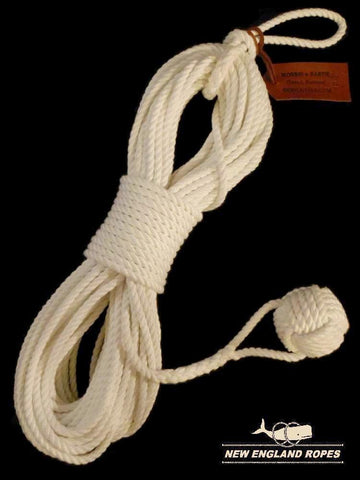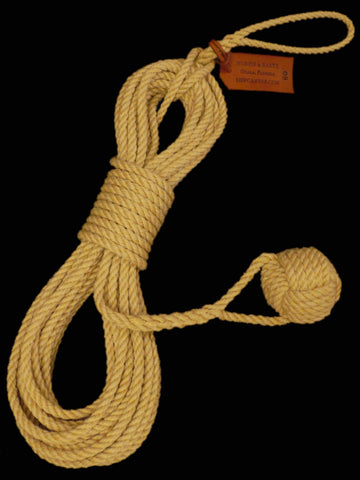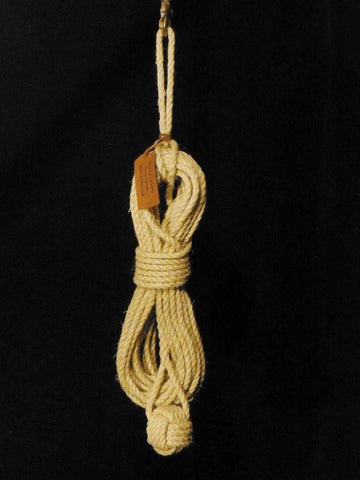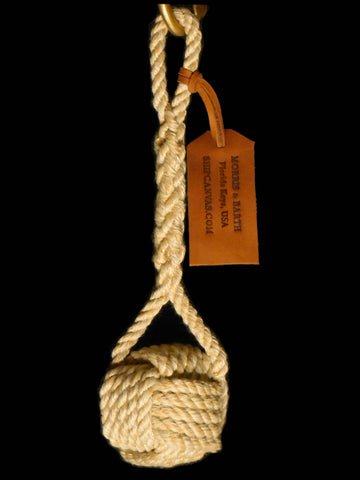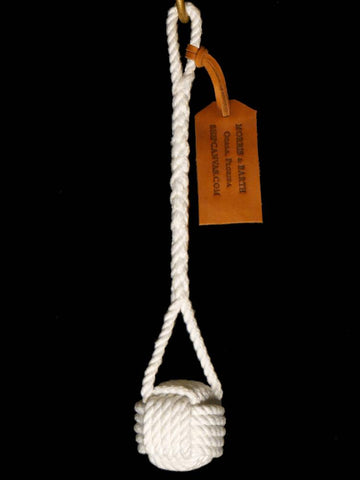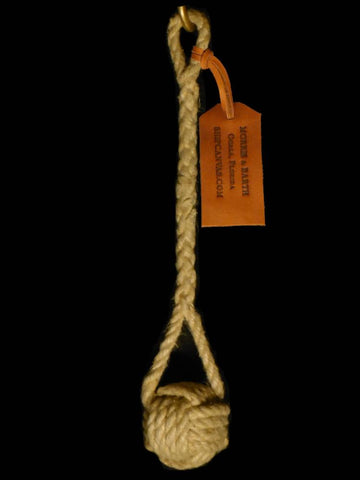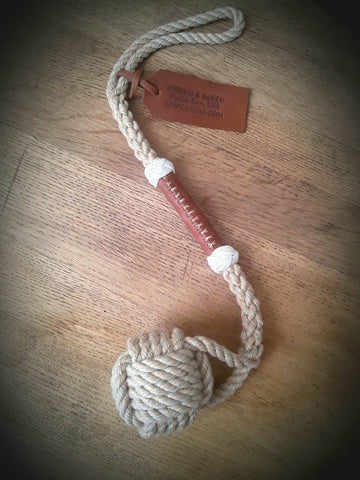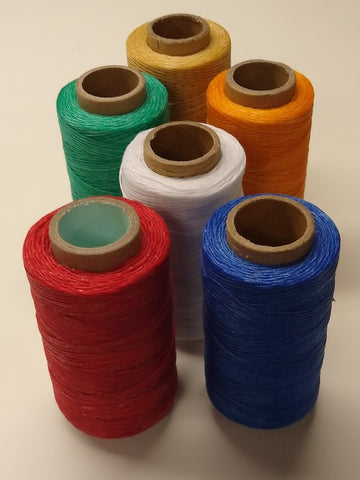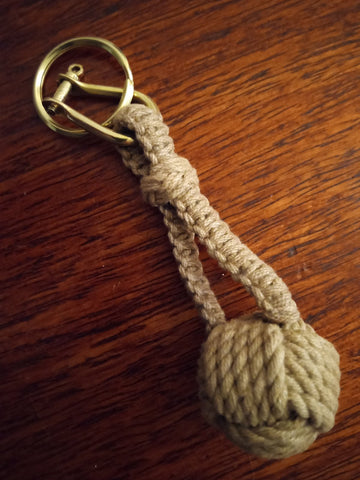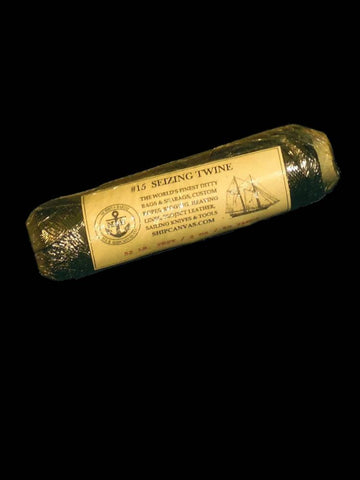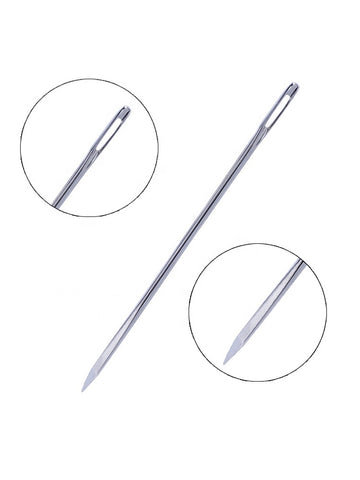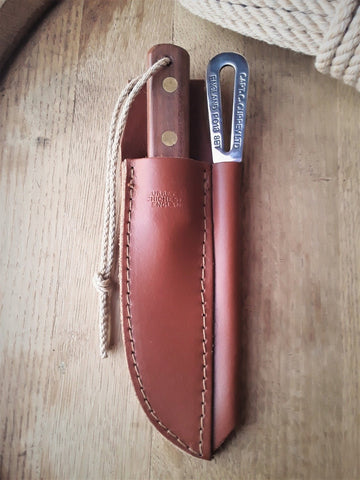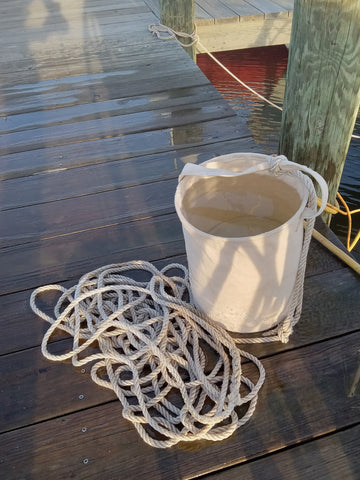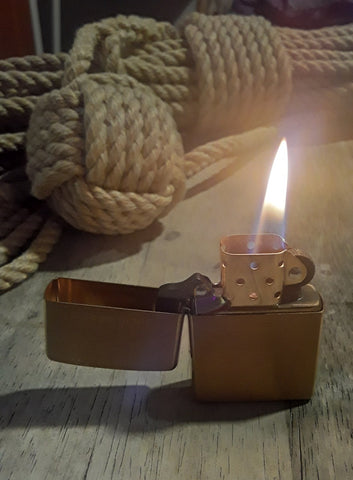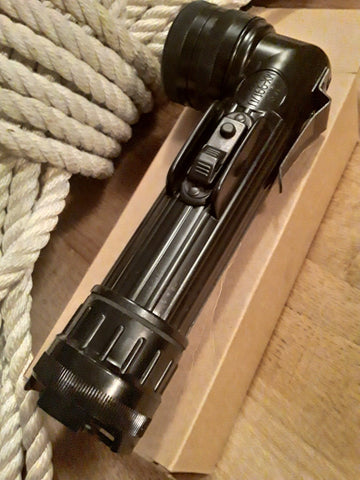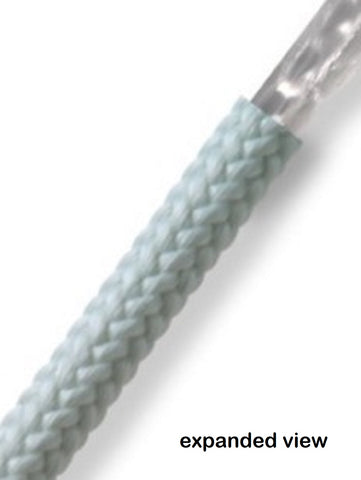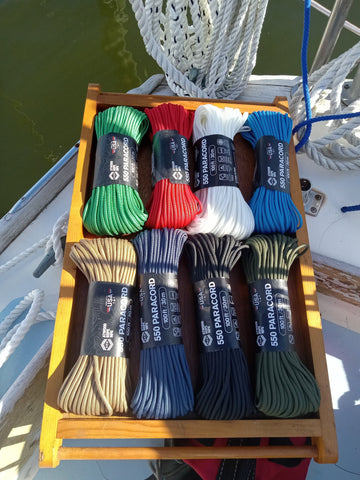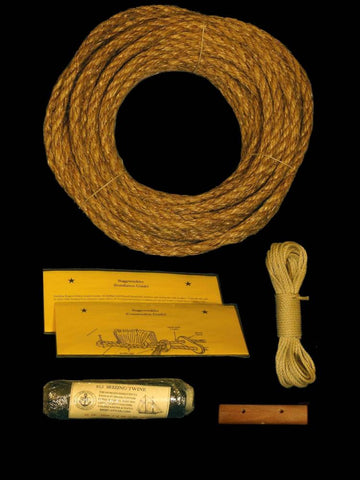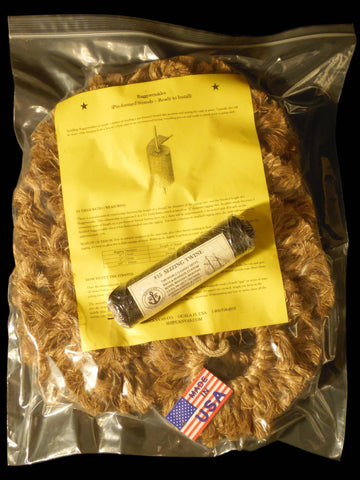Marine Heaving Lines & Monkey's Fist Knots

Marine Heaving Line FAQ's
Have a question or special request? Please contact Ed Morris
In basic terms, what is a heaving line and how is it used?
A heaving line is a length of rope that has been configured for ease of throwing, sometimes long distances across the water. It is normally attached to, and used for sending, a much heavier line across the open distance between a vessel and a pier, or sometimes between two vessels.
The most common application is for docking. For example, whereas it can be difficult to toss a heavy 40' line to the dock attendant on a breezy day, it is quite easy to send the heaving line in those same conditions. Once the dock attendant has received the end of the heaving line, he simply uses it to "pull" the heavy dockline line to himself so that it can be made off to a piling or cleat in the usual way.
Heavy Duty Heaving Line with Monkey's Fist Knot
by Morris & Barth (SHIPCANVAS)
Do I need a heaving line?
In the example above, the obvious alternative would be to pilot the vessel close enough to the pier so that her docklines can be handed or passed over a shorter, more manageable distance. But this would be assuming it can be done safely, without crashing the dock or other nearby boats. So the question of whether or not to use a heaving line is truly a matter of scale. The larger (or less maneuverable) the vessel... and/or the longer (or heavier; stiffer) her docklines... and/or the less favorable the wind and current... then the safer and more prudent it becomes to stand off a bit (keep some distance from the pier) and toss a heaving line.
Which length is best?
It depends on how the heaving line will be used, as there might be several factors involved, including the anticipated need for 'range' and the size and maneuverability of the vessel itself. Generally, most small-craft and recreational vessels are maneuverable enough in close quarter docking situations, and probably won't need to use a heaving line very often.
One exception here might be certain sailboats, some of which are notoriously uncooperative in reverse gear. Add in a cross current on a breezy day... perhaps with a long keel or a folding propeller... and the average sailboat can become quite unresponsive to her engine and helm. Even so, the ability to get a 50 or 60-foot line passed off to the dock... q u i c k l y... the first time... can make all the difference between making a scene or docking like a pro.
Larger vessels and yachts will almost always benefit from a longer heaving line (100'), as will vessels that have a relatively high freeboard (height; as measured from waterline to deck). 100-feet is also a good working length for most commercial vessels and trawlers.
Big ships, military vessels, and oceangoing tugs with ample deckspace and the occasional need for maximum range will use something closer to 150' length, which also happens to be about the longest possible distance that a heaving line can be tossed manually... and that by a skilled deckhand with a good throwing arm! Sometimes these extra-long heaving lines are fired out of a special cannon. Even so, the usual reason for this extra length would be to allow for "drop" which might be necessitated by these vessels having extra high freeboard, which can be as much as 40 or 50 feet off the water.
An important point to keep in mind is that normally a heaving line should be thrown a bit 'past' its target. If the target is a human, we should also aim somewhat off to the side, preferring to land it on the dock rather than expecting anyone to catch it. Sometimes, the advantage of a longer heaving line is not necessarily that the full coil will be thrown; but that there will be less resistance (or snap-back) when the line has fully extended to reach its target. It's also nice to have some slack to work with, preferably at both ends.
I'm thinking about building my own heaving line. What size/type rope do you recommend?
We usually suggest either 1/4" or 5/16" diameter. Smaller diameters have a tendency to get tangled up. Larger diameters only become heavier and more difficult to throw. A good 3-strand construction is better than braid because it has a more gradual, natural resistance to 'hockling' (tight twists and kinks) when thrown from a coil.
Going back a hundred years or so, the common material for constructing a heaving line was natural hemp rope... which still works of course. But times have changed, and contemporary advancements have opened up an entirely new realm of possibilities which improve the performance and longevity of a heaving line.
Of these various materials, polyester (Dacron) is an easy choice because it combines maximum strength and durability with consistent handling. Nylon rope is acceptable too, but as it ages the flexibility is somewhat reduced, and there's a tendency for it to develop a 'memory' when it's stored in a coil.
Sometimes polypropylene (plastic) rope is used. For life-buoy tethers and rescue equipment, the fact that it floats is ideal. But it's also slippery, stiff and a little too light to make a proper heaving line because it just doesn't "carry" as well through the air. Especially on a breezy day - the difference might be compared to throwing a baseball versus throwing a ping-pong ball!
If you're planning to build your own heaving line, keep in mind that you'll need about 12' of extra rope, over and above the length of the finished heaving line. About 10' goes into the monkey's fist knot... and then another foot or so goes into the tapered splice (at the monkey's fist end)... and then another foot or so for the eye-splice at the bitter end.
What goes inside the Monkey's Fist knot?
The usual practice is to form the monkey's fist knot over a "core" which adds to the mass, diameter and aerodynamic properties (roundness) of the knot itself. In the old days, this core material might have occasionally included lead shot, ball bearings, bolts, glass marbles, and various other combinations of weights and high-density materials... all of which are now illegal under maritime law.
That's because the injuries and property damages that can be caused by a "loaded" heaving line are serious and substantial. Remember, the Monkey's Fist is often traveling the full distance of 50 to 100' at somewhat high speed!... So giving some thought to "who" and "what" might be at the receiving end is a good thing.
Fortunately, a properly built heaving line doesn't rely upon the weight of its core in order to function efficiently. Quite the contrary... it's the concentrated shape and weight of the rope's end itself, configured as a Monkey's Fist, that overcomes inertia and enables the entire heaving line to travel through the air... with the Monkey's Fist in the lead, and the balance of the coil spreading out just behind it. In other words, the monkey's fist only has to be a little bit heavier to do its job.
This hardwood ball makes an excellent Monkey's Fist core.
1+ ounce / 1.75" diameter
Consider this: A "5-finger" monkey's fist that is constructed of 1/4" dacron rope over a 1-2oz, 1.75" ball core will require approximately 10 feet of rope, and the concentrated weight of the end will be just over a quarter pound. If we increase the line diameter to 5/16" over the same core, the finished weight will be approximately 1/3 pound. In our experience, this is more than enough for excellent performance in breezy, open water conditions.
|
The "Old-Timer's" Trick If the wind has kicked up and you still want more weight, try dipping the monkey's fist end into the water before tossing the heaving line. This will approximately double its weight. |
Should I build a full-length heaving line, or just a short-tail monkey's fist to attach a light line whenever I need it?
We make both kinds. But the best answer to this question relates to the aerodynamics and handling characteristics of the heaving line itself.
Initially, a "short tail" monkey's fist is less expensive to make or buy, involving only 12-14 feet of rope, plus a suitable core, plus the time and/or labor to make it. Of course any cost savings assumes that we already have a spare line to which we can attach our short tail monkey's fist. Otherwise there's virtually no difference in cost.
But regardless - the dedicated, full-length heaving line always offers superior performance over a short tail Monkey's Fist that's tied to the end of another line. That's because the additional weight and windage created by a secondary connection point have a tendency to subtract from a heaving line's aerodynamics, balance and overall efficiency.
In other words, the full-length heaving line works best because it eliminates the drag and counterweight effects of an attachment knot (like a bowline, rolling hitch, etc.). It may not seem like much difference in calm conditions, but as with most things rigging related, the drag is increased exponentially as the wind picks up.
Have a heaving line question? Need something custom built to your specifications? Please contact Ed Morris

